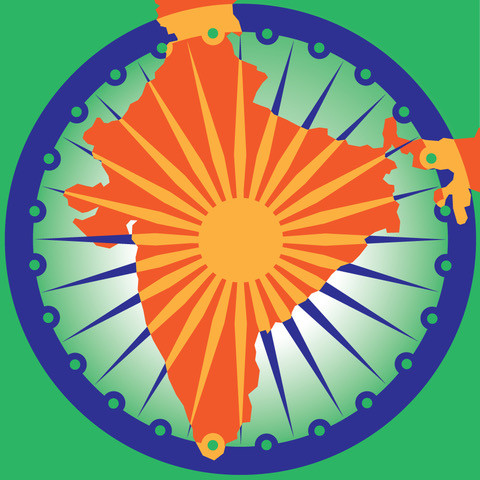 (Photo by iStock/Radachynskyi)
(Photo by iStock/Radachynskyi)
There occasionally comes a time when nonprofit organizations working toward similar ends decide that the costs of working in isolation outweigh its benefits, and that a collective approach can bring about greater change. Recently, 11 US-based organizations working toward humanitarian and development goals in India made that leap: the Akanksha Fund, American India Foundation (AIF), Arogya World, CRY America, Dasra, Ekal USA, Foundation for Excellence, Indiaspora, Magic Bus USA, Pratham USA, and VisionSpring. Together, they formally established a coalition called the India Philanthropy Alliance, which publicly launches tomorrow.
As the part-time staff director and a founding member of this group, we are eager to share how we got to this point and some of the lessons we’ve learned along the way.

We believe the highest calling of a nonprofit organization is to identify effective and efficient solutions to address the root causes of societal problems. Today, there are some formidable obstacles to realizing this ideal. For one, the number of US nonprofits (more than 1.56 million at last count) continues to grow while private donor support shrinks, in part due to the 2017 tax law. Partisan gridlock at many levels of government means that effective policy changes informed by nonprofits’ experiences are difficult to enact, while budget deficits make the allocation of large-scale public support for innovative solutions challenging. Furthermore, potential donors and employees make ever-greater demands of the nonprofits that compete for their attention.
These issues impact many nonprofit organizations. The members of our coalition, who all raise money in the United States for humanitarian and development work in India, face additional challenges. Apart from a few notable exceptions, surveys show that a robust culture of philanthropy has yet to take root among Indian Americans—our natural, though far from only, constituency. This is despite their growing affluence. Indeed, one recent study estimates that Indian Americans give at one-third the rate of the overall US population. This is exacerbated by the growing disconnect we observe between second- and third-generation Indian immigrants and the land of their ancestors. We observe the increasing success of leading universities in capturing seven-, eight-, and even nine-figure commitments from Indian Americans while our own organizations secure very few gifts that large. We hear lingering doubts about the honesty and efficiency of nonprofits in India, despite the success of many of them in professionalizing.
Furthermore, the proliferation of organizations raising money for causes in India and repeatedly asking donors to participate in their many events (especially gala dinners) has led to calls for consolidation and occasional cries of fatigue. There is also a growing perception that India’s needs are disappearing as its overall economy grows. Finally, like many developing countries, India’s philanthropic sector is governed by laws that, while presumably well-intentioned, sometimes stymie effective responses to societal problems from nonprofit organizations.
In this environment, some troubling trends are becoming more common. For example, nonprofit leaders frequently sign grant agreements they know they’ll have difficulty fulfilling. They also often neglect nurturing connections with leaders of other organizations doing complementary work, resulting in limited peer-level sharing of useful information and insights. When donors or public officials ask about other organizations working toward similar goals, nonprofit staff and senior volunteers focused on India and raising money in the United States tend to claim ignorance, share dated information, damn with faint praise, or even lightly criticize their competitors. Indeed, we have noticed a “circular firing squad” dynamic becoming more common as the desperate scramble for resources accelerates. Above all, precious little time remains for leaders to:
- Explore programmatic synergies with peers.
- Analyze, much less influence, giving trends.
- Advocate for more enlightened public policies related to philanthropy in the United States and India.
We must act now before our fragmented individual efforts undermine the greater good. Open and honest conversations are a great place to start.
Beginning With Candid Dialogue and Collective Analysis
More than two years ago, a group of leading nonprofits with operations in India and constituency-building efforts in the United States began coming together monthly to chart a different, more collaborative course. Spurred by a concept note written by Alex Counts (co-author of this article and then-CEO of the American India Foundation) and Silicon Valley philanthropist M. R. Rangaswami, as well as by the determined efforts of Bala Venkatachalam (also co-author of this article) and his Pratham USA board chair Deepak Raj to attend the kick-off meeting, the group began to explore things it could do collectively that no individual organization could likely accomplish alone.
Core principles of the collective impact approach to social change—including setting a common agenda, engaging in mutually reinforcing activities, continuous communication, and establishing a lean “backbone” support team—heavily influenced our process. We also drew important lessons from the marriage equality movement’s success, particularly the benefits of recasting self-defeating messages and ensuring that multiple organizations consistently use them in their external communications.
These lessons became powerful filters through which to view the volunteer recruitment and fundraising stagnation many of our organizations were experiencing. Our monthly conference calls and semi-annual, day-long retreats sometimes meandered. At times, the larger organizations seemed to have little in common with the smaller ones and doubted whether the partnership was worth it. But over many months, we discovered three opportunities our collective action made possible:
1. Active learning and new potential partnerships. Simply building familiarity and rapport among leaders of competitor-peers has proven powerful. Leadership can be lonely, and first-time nonprofit CEOs in particular can benefit from comparing notes with others navigating similar terrain. Having a platform to facilitate such communication on a regular basis makes it more likely to happen. In a few cases, relationships we built up around the table are leading to active collaborations. There are emerging partnerships between an organization that has valuable content on topics such as diabetes prevention but lacks robust distribution channels, for example, and other organizations with well-developed distribution channels that are in need of compelling content. These on-the-ground collaborations are nascent but promising.
2. The power to influence public policy. The group identified a number of public policy changes that, if enacted in the United States or India, could have a galvanizing impact on the entire community’s ability to deliver value to marginalized populations. For example, Indian nonprofits are currently unable to establish even small endowments, include non-Indians (including Indian Americans) in their governing bodies, or bring their own social innovations to other developing countries. It became clear that researching and then making the case for changes to these laws would be much easier to do collectively than individually.
3. Clearer, more consistent messaging. We concluded that the cacophony of inconsistent, confusing, and ineffective messages, sometimes delivered at events scheduled in the same city on the same night due to lack of coordination, was a factor contributing to the lower levels of Indian American giving, especially to India-based causes. Antiquated approaches to fundraising and the inability to consistently articulate a narrative of philanthropic complementarity, for which our most sophisticated stakeholders have long advocated, were also important.
Building a Coalition: Five Lessons
For others looking to build a coalition, here are a few lessons we’ve learned so far:
- Several respected leaders need to buy into the collective process early on in order to create a sense of momentum and urgency in other organizations to join the effort.
- Building up trust can slow down the process at first but speed it up later.
- Creatively compromising and occasionally taking the time to muddle through complex or contentious issues helps prevent dissenting members or minorities within the coalition from feeling trampled on and potentially withdrawing.
- Regularly facilitating open dialogue around member organizations’ apprehensions ensures that nascent coalitions confront issues that could doom it.
- It helps to have someone willing to drive the group forward month after month in order to overcome the inevitable factors that tend to bog down a new group’s progress.
According to the US Census, the Indian diaspora is America’s ethnic group with the highest per capita income. Its potential to bring innovative ideas, financial resources, talent, and technology to bear on India’s urgent humanitarian needs and opportunities is vast.
As a new coalition of organizations that has already impacted 67 million people in India and that raises $125 million annually, we seek to partner with this community—and other friends of India in the United States and beyond—in ever-more creative ways. Our first priority is to build on early efforts to actively collaborate in our field operations in India and in our constituency development work in the United States. Then, with the help of the law firm Nishith Desai Associates, we will begin a dialogue with the Indian government about public policies we believe will improve the performance of credible nonprofits operating in the country. We are also participating in ChaloGive, a weeklong effort starting tomorrow that seeks to celebrate and grow Indian-American philanthropy. And as we continue to work together, we will harmonize our messaging as much as possible to present a more coherent argument for effective philanthropy benefitting India, while making a special effort to engage second- and third-generation Indian Americans.
Time is running out to help India reach or exceed its Sustainable Development Goal commitments and realize a better world that so many of us envision. Organizations going it alone make success harder for themselves and others with shared goals, while by working together we can achieve the changes we all want to see. Can we continue to overcome our differences and truly collaborate to provide help to those who need it? We believe the answer is and must be: yes.
Support SSIR’s coverage of cross-sector solutions to global challenges.
Help us further the reach of innovative ideas. Donate today.
Read more stories by Bala Venkatachalam & Alex Counts.

